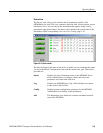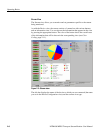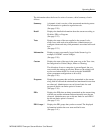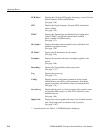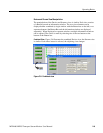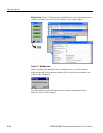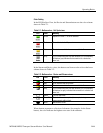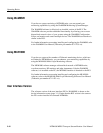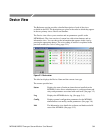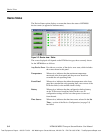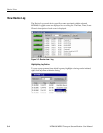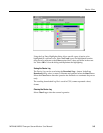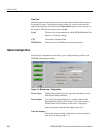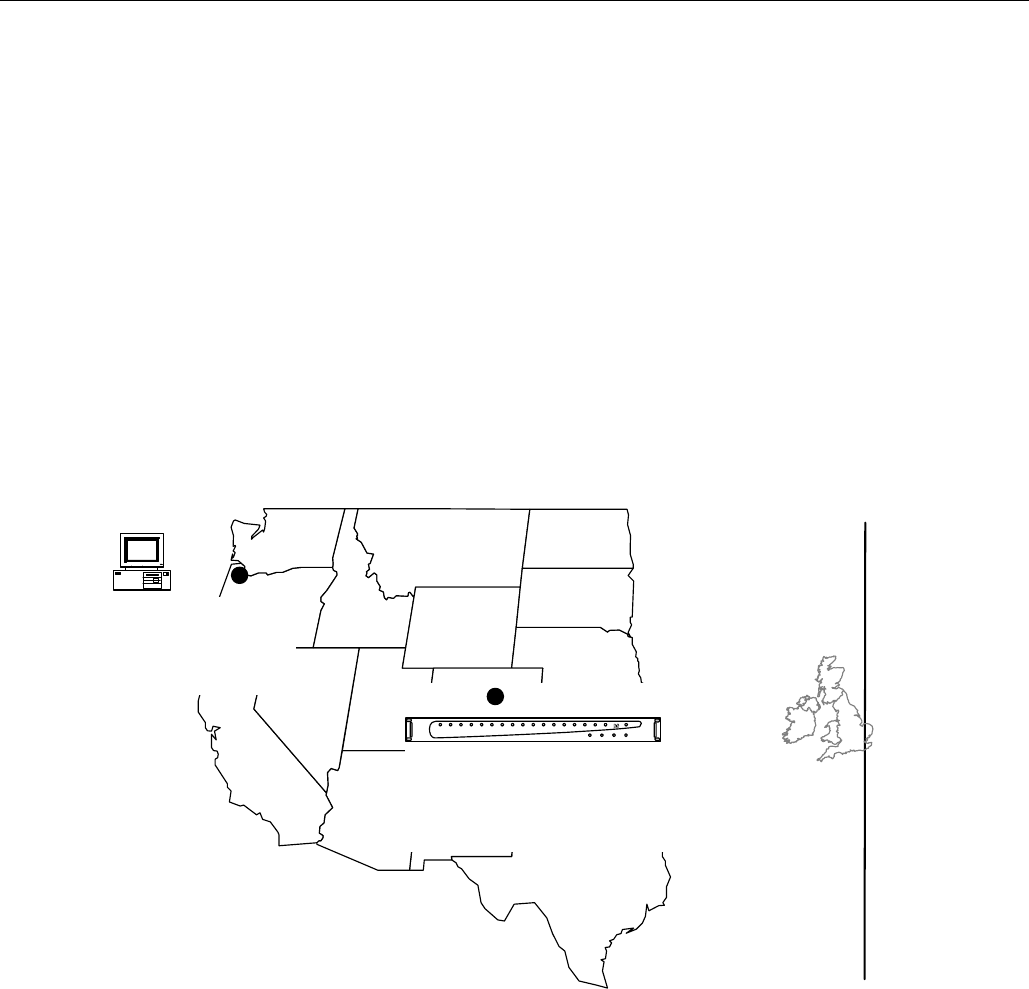
Operating Basics
MTM400 MPEG Transport Stream Monitor User Manual 2-13
Time Zones
An inevitable consequence of allowing the RTM device user interface to be
accessed across networks is the crossing of time zones. Various features of the user
interface display timing information, including the Log files. You need to know the
time source being used to record events. Also, when scheduling the loading of
configuration files, time zones must be taken into account (see Scheduling,
page 3-91).
Figure 2-8 shows a typical setup in which an MTM400 is located in Denver and is
monitored from Portland. In local time, Portland is one hour behind Denver. In this
example Universal Coordinated Time (UTC) is 10 p.m. Therefore the local times
in Portland and Denver are 2 p.m. and 3 p.m. respectively.
Denver
Local Time = 3 p.m.
UTC = 10 p.m.
UTC/Local Offset = -420 minutes
Portland
Local Time = 2 p.m.
UTC = 10 p.m.
UTC/Local Offset = -480 minutes
UTC = 10 p.m.
USA (part)
Figure 2-8: Time zones - illustration
The MTM400 user interface allows you to coordinate times of the system elements
and to choose the local reference time zone; UTC, local time at the client PC or
local time at the RTM device. All times are calculated with respect to Universal
Coordinated Time. (See Device Configuration - Set Time, page 3-9.)



